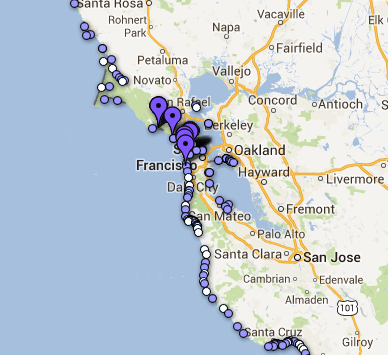
On Wednesday the National Resources Defense Council released a report on the water quality of beaches all around the country. It starts out with this pleasant thought: "The water at your local beach might be contaminated by human and animal waste, putting your health at risk: bacteria, viruses, and other pathogens in that waste can make exposed swimmers sick."
Anything that leads with the words "contaminated" and "human and animal waste" is bound to get your attention. Here is the report's interactive map for California. Scroll down to see a list of how each beach fared by county. The data include the number of days each was closed or an advisory was issued in 2012. The NRDC says the vast majority of these instances were due to unknown contamination sources. Sewage spills or leaks and stormwater runoff were also implicated.
According to the California Environmental Protection Agency, when an actual closure is ordered, "there has been a sewage discharge that is affecting the beach area. Closures are put in place immediately after a sewage spill is reported that may affect the beach."
But there is a significant delay between the time a beach is determined to be too contaminated to use and when it's shut down, the NRDC says. "Currently approved methods for determining levels of fecal indicator bacteria in beachwater depend on growth of bacteria colonies in cultures that take 18 to 96 hours to produce results. Because of this delay, swimmers generally do not know until the at least the next day if the water they swam in was contaminated. The delay also means that beaches may remain closed or posted after water quality has improved."
The Bay Area was well represented in terms of bacteria that exceeded California's daily maximum standards for exposure. According to the report, among the nine area counties, Contra Costa had the highest exceedance rate in 2012, followed by San Mateo County. San Francisco was No. 4 at 15 percent.

